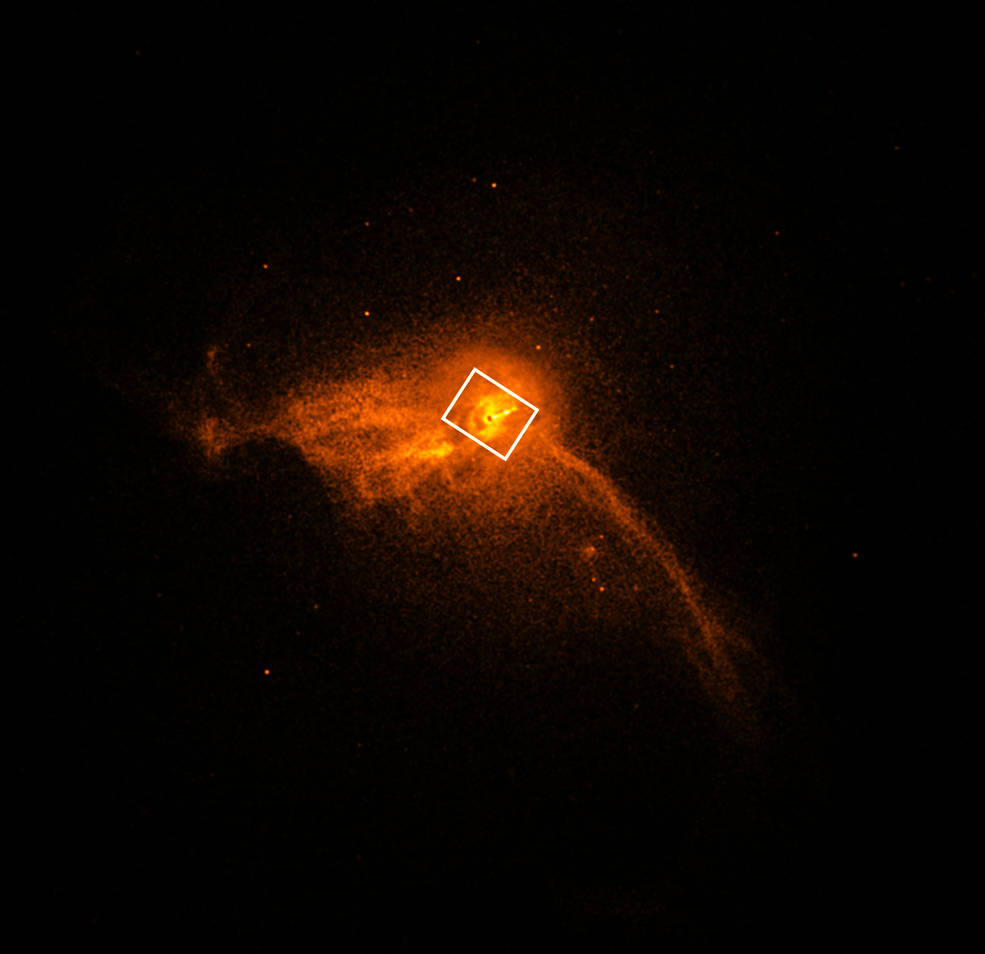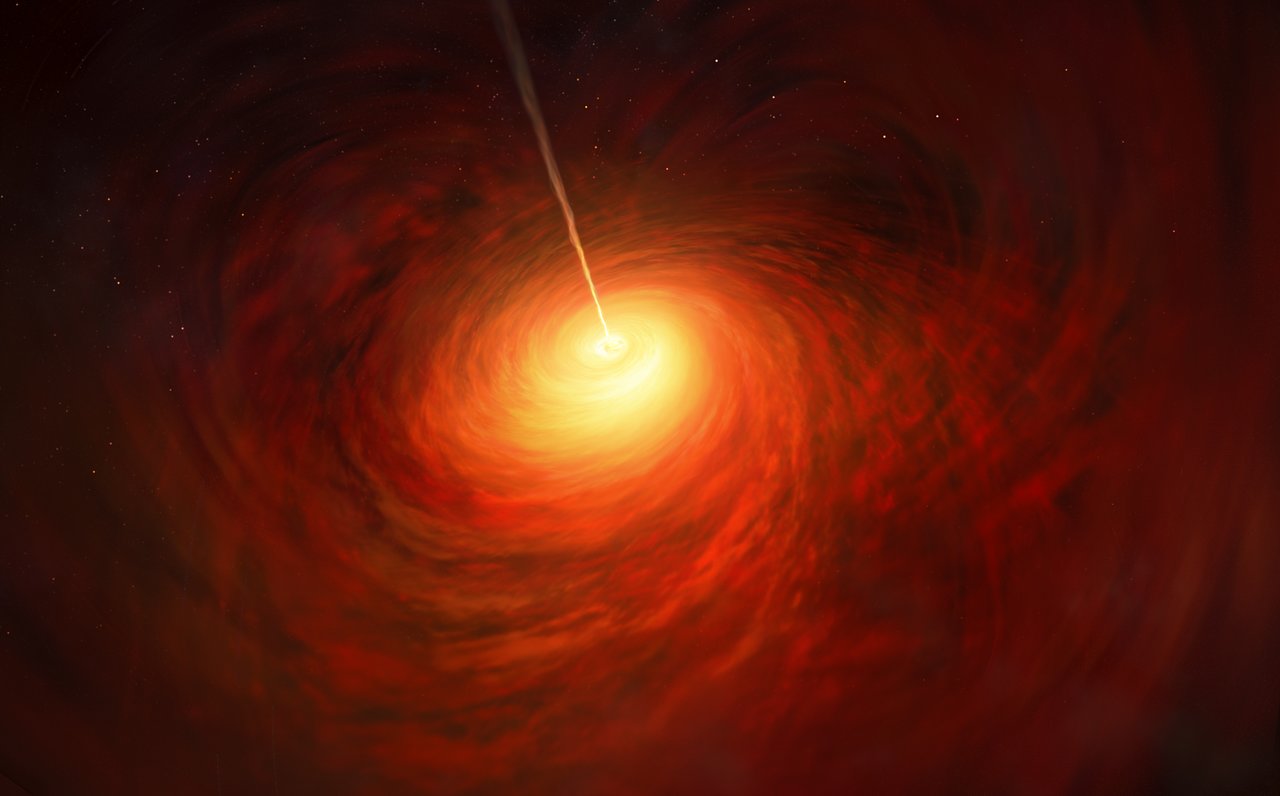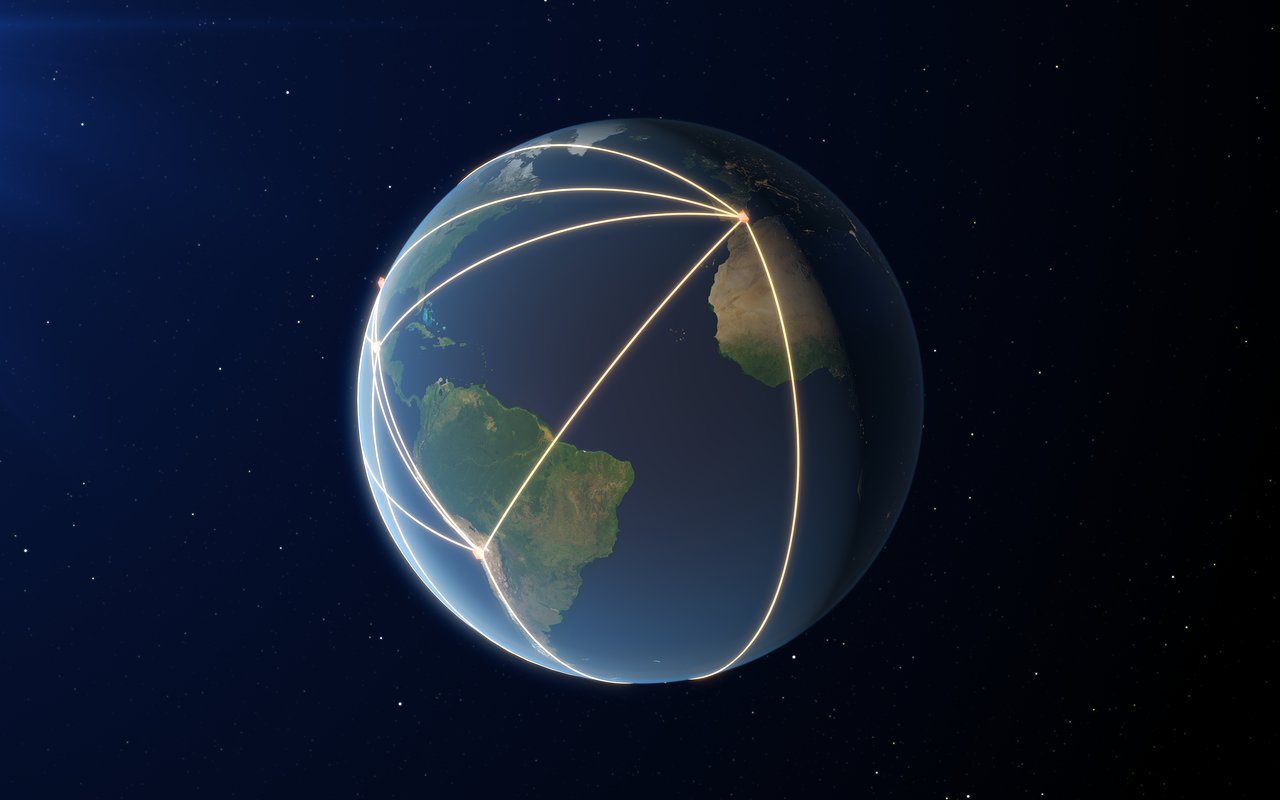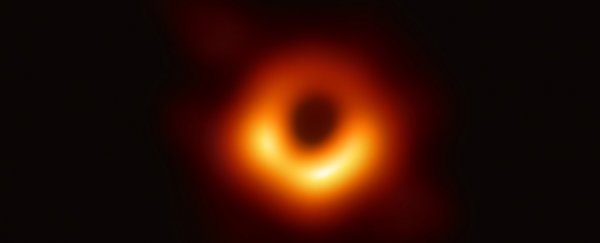No. Stop. Scroll back up. Look at that picture. Stop scrolling down and look again. What you're looking at is history. That is the very first direct image, ever, of the event horizon of a black hole.
It's 55 million light-years away, and it's the supermassive black hole at the centre of a giant elliptical galaxy called M87. This thing is humungous - around 6.5 billion times the mass of the Sun.
Isn't it just glorious?
What you're looking at is the first result from the Event Horizon Telescope (EHT), a global collaboration that turned radio telescopes around the world into one giant telescope, expressly to find out what a black hole looks like, in real life.
Beautifully, it matches predictions dating back decades. This is it. We now know, for a fact, that the astrophysical objects that were just theory a mere 50 years ago are really what astronomers and physicists thought they were.
Supermassive black holes exist. And we can look at them.
"The confrontation of theory with observations is always a dramatic moment for a theorist," said astrophysicist Luciano Rezzolla of Goethe Universität in Germany.
"It was a relief and a source of pride to realise that the observations matched our predictions so well."
It looks a bit like a blurry orange coffee stain, but here's what we're looking at. In the middle is the shadow of the black hole. We can't actually see the black hole itself, because its immense gravity doesn't allow any detectable radiation to escape, so it appears as opaque space.
Around it is the accretion disc. M87's supermassive black hole is active, which means it's surrounded by a tremendous accretion disc of very hot, swirling gas and dust that is slowly falling into the black hole. That disc gives off a lot of radiation.
 Chandra X-ray Observatory close-up of the core of the M87 galaxy. (NASA/CXC/Villanova University/J. Neilsen)
Chandra X-ray Observatory close-up of the core of the M87 galaxy. (NASA/CXC/Villanova University/J. Neilsen)
Because the disc is rotating, it appears brighter where it is moving towards us, and dimmer where it is moving away. This effect was predicted by Einstein's theory of general relativity.
The image isn't high-enough resolution at this point to measure the rotation speed, but the EHT team, who watched the object for four days, could tell that it's rotating in a clockwise direction.
"Once we were sure we had imaged the shadow, we could compare our observations to extensive computer models that include the physics of warped space, superheated matter and strong magnetic fields. Many of the features of the observed image match our theoretical understanding surprisingly well," said Paul T.P. Ho of the East Asian Observatory.
"This makes us confident about the interpretation of our observations, including our estimation of the black hole's mass."
Future analyses of the data - which are all being made publicly available - could reveal more details, such as how closely the image matches predictions of general relativity. It could also help astrophysicists figure out the mechanisms that produce the enormous relativistic jets that shoot from active black holes.
 Artist's impression of M87*, showing the relativistic jet, and superheated material around it. (ESO/M. Kornmesser)
Artist's impression of M87*, showing the relativistic jet, and superheated material around it. (ESO/M. Kornmesser)
The image isn't super clear, so there are some effects that we may not be able to see - such as a relativistic effect called frame-dragging, which happens when the black hole is spinning. As it spins, because its gravity is so intense, it drags spacetime with it.
"That's been understood as an effect of general relativity for a very long time, but it only gets measurably large if you're really close to the event horizon of a black hole," theoretical astrophysicist Philip Hopkins of Caltech, who wasn't involved with the research, told ScienceAlert.
"And if we can measure it, not only is it a super-interesting test of this weird regime of relativity, it also tells you really cool information. If the black hole is spinning, that's telling you how much angular momentum it has, which tells you about all the things it had to swallow to make itself in the first place."
In other words, a super-detailed direct observation of a black hole could tell us how the supermassive ones get so supermassive.
But this is all just the beginning. This is just the very first picture. And we can hardly underestimate the amazing work that went into it.
 The locations of some of the EHT telescopes, as well as the long baselines between them. (ESO/ L. Calçada)
The locations of some of the EHT telescopes, as well as the long baselines between them. (ESO/ L. Calçada)
"Honestly in some ways the most impressive thing in all seriousness is just the technical achievement involved, and not just what you learn from this," said Hopkins.
"Being able to image anything astrophysically at this kind of resolution is kind of mind-blowing."
There's another direct image that the EHT collaboration is currently working on, of Sagittarius A*, the black hole at the centre of the Milky Way - and it should be ready soon, according to the announcement we heard today.
There are future observations planned, too. We're about to see the lid lifted on these mysterious objects like never before. Black hole science will never be the same again.
Six papers have been published in The Astrophysical Journal Letters. We can't wait for the hundreds to come.
